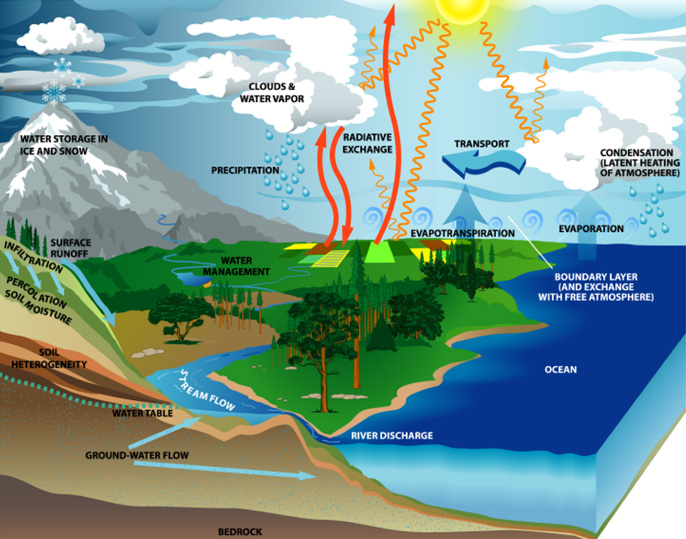
|
Movement of Matter Through the Environment |

|
We've been talking about the importance of the presence and accessibility of matter to ecosystems, both constructing organisms and how organisms interact with that matter every single day. During this activity you will be learning about the ways water. carbon, nitrogen, and phosphorus are cycled through the environment. Each one of these elements/molecules are necessary for homeostasis to be maintained within individual organisms and the ecosystems in which they live. As you move through each cycle, think about what might happen if something occurred to interrupt that cycle. Use the links to the right (You do NOT have to visit EVERY site. Use the ones that are most helpful to YOU!) to explore each cycle. You will have one period to work on this, but you may access this assignment on the webpage at home if you need more time. You make work with partners to explore the information but EACH student should take their own notes including (Jamboard is attached in Google Classroom): 1. Describe WHAT is being cycled (are there different forms (states of matter) of the element/molecule?) 2. Use the provided diagram to illustrate how the cycle works (what processes are involved? Where is the matter moved to and from? Use arrows, symbols, & text to identify on graphic). 3. Why do we need the cycles of matter to maintain homeostasis within individual organisms, ecosystems, and the biosphere as a whole? (What do organisms use the element/molecule for in their bodies? Identify processes and molecules where each element/molecule is found). 4. What might happen if this cycle stopped working? **Notes should be succinct and in YOUR OWN WORDS! These are designed to help YOU differentiate between these cycles AND examine their importance.** |
Links:
|